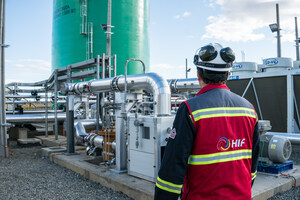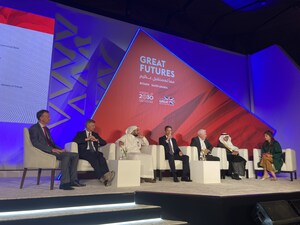Johnson Matthey releases Platinum 2011
- The Platinum Market Was Close to Balance in 2010
LONDON, May 16, 2011 /PRNewswire/ -- In line with global economic recovery in 2010, gross demand for platinum increased by 16% to 245.1 tonnes, according to Johnson Matthey in "PLATINUM 2011", released today. Global supplies of platinum increased by 0.6% to 188.5 tonnes, while recycling of platinum rose by almost a third to 57.2 tonnes. Resurgent growth in the automotive and industrial sectors was responsible for the platinum market being close to balance, with a surplus of only 0.6 tonnes, compared with a surplus of 19.8 tonnes in 2009.
SUPPLIES OF PLATINUM ROSE SLIGHTLY IN 2010
Global supplies of platinum increased by just 1.1 tonnes to 188.5 tonnes in 2010 after a mixed year for producers. Although refined production in South Africa rose in 2010, not all of this metal was shipped by the year-end, leading to sales of platinum from South Africa remaining flat at 144.2 tonnes. Russian platinum shipments climbed by 5% to 25.7 tonnes. Supplies from Zimbabwe grew by almost a quarter to 8.7 tonnes following a ramp-up of expansion projects in the country.
PLATINUM DEMAND SURGED AS THE AUTOMOTIVE INDUSTRY RECOVERED
Demand for platinum in autocatalysts rose by 43% to 97.2 tonnes as the global automotive sector bounced back from a poor 2009. Purchasing of platinum for use in automotive emissions control increased in all regions as vehicle production rose. The largest increase in platinum demand was in Europe, where it is mainly used in diesel autocatalyst formulations. Better economic conditions helped raise purchases of fleet vehicles, which tend to be diesels, and the end of national car scrappage schemes meant diesels recaptured market share.
INDUSTRIAL DEMAND FOR PLATINUM CLIMBED SHARPLY
Gross industrial demand for platinum jumped by 48% to 52.6 tonnes in 2010. Economic recovery in developed markets, and strong growth in emerging ones, drove higher levels of production of electrical, glass and chemical products which use platinum either in the finished item or in the manufacturing process. There was a strong increase in purchases of platinum for the manufacture of LCD glass, used in televisions and electronic displays. Demand for platinum in the chemical industry increased as plants were run at higher capacity to supply the growing markets of India and China.
PLATINUM JEWELLERY DEMAND DECLINED IN 2010
Purchasing of platinum by the jewellery sector fell by 14% to 75.1 tonnes in 2010 following an extremely strong 2009. Demand from the Chinese jewellery sector remained robust, at 51.3 tonnes, but this was significantly below the exceptional level of 2009. A combination of higher metal prices and full stock levels contributed to the decline. However, demand in China was substantially higher than in 2008, the last time platinum's price was at similarly high levels to 2010.
NET PHYSICAL INVESTMENT DEMAND FOR PLATINUM REMAINED STRONG
Stimulated by low interest rates and a positive outlook for supply-demand fundamentals, net physical investment demand for platinum remained robust in 2010 at 20.2 tonnes, a similar volume to that seen in the previous year. Investors bought heavily into the newly-launched physically-backed platinum exchange traded fund (ETF) in North America. Holdings in the more mature European ETFs declined slightly.
PLATINUM FORECAST TO TRADE HIGHER THAN IN 2010
Growth in automotive and industrial demand is expected to continue and, with limited expansion in supplies, Johnson Matthey forecasts that the price of platinum will average $1,870 per ounce in the next six months, compared with an average of $1,762 during the six months to the end of April 2011. With positive supply-demand fundamentals and continuing global economic growth, platinum could trade as high as $2,000 in the period. If interest rates in key markets remain low, speculative investment interest should also support platinum's price. Although external shocks such as oil price rises or negative sentiment surrounding sovereign debt could once again prove to be a drag on the price, strong physical buying in China is likely to give support during price dips, meaning platinum is unlikely to fall below $1,750.
RECORD HIGH DEMAND MOVED THE PALLADIUM MARKET INTO DEFICIT IN 2010
Gross demand for palladium increased by 23% to reach a record high level of 299.4 tonnes last year. This was mainly due to strong purchasing by the automotive and physical investment sectors. Although supplies of palladium rose last year, and recycling levels increased by almost a third to 57.4 tonnes, the market moved into a fundamental deficit of 15.2 tonnes due to the strength of demand.
SUPPLIES OF PALLADIUM ROSE SLIGHTLY IN 2010
Global supplies of palladium rose by 5.9 tonnes to 226.7 tonnes last year. Supplies of palladium from Russian mining increased by 2% while sales of palladium from Russian state stocks were once again at approximately 31 tonnes.
GROSS DEMAND FOR PALLADIUM IN AUTOCATALYSTS INCREASED BY 35%
Higher global production of light duty passenger vehicles, together with tightening emissions legislation in some markets, helped raise demand for palladium by 35% to 169.5 tonnes in 2010. Rapid growth in the light duty sector lifted automotive palladium demand in China by 42% to a new level of 30.3 tonnes.
INDUSTRIAL PURCHASING OF PALLADIUM ROSE LAST YEAR
Gross industrial demand for palladium was 2.2 tonnes higher in 2010 at 76.8 tonnes. Use of palladium in the chemical industry rose by 22% as consumer demand for plastics led to significant capacity expansions and greater utilisation of existing facilities. Dental demand for palladium softened but electrical demand increased.
PALLADIUM JEWELLERY DEMAND FELL BUT PHYSICAL INVESTMENT REACHED RECORD LEVELS
Gross palladium demand in the jewellery sector fell by 20% to 19.3 tonnes, largely due to a decline in manufacturing of palladium jewellery in China, which more than offset an increase in manufacture of palladium jewellery in Europe and North America. Identifiable physical investment demand for palladium grew by 74% to 33.7 tonnes in 2010 with heavy buying into US ETFs. Investment interest was underpinned by positive supply-demand fundamentals for palladium, as well as a rising price and low opportunity cost to investors.
PALLADIUM FORECAST TO AVERAGE $825 IN THE NEXT SIX MONTHS
Supplies of palladium are expected to decline in 2011 with lower sales from Russian state stocks more than offsetting an increase in output elsewhere. Demand in the automotive and industrial sectors is expected to continue to grow this year and even if there is no repeat of the exceptional levels of physical investment demand for palladium seen in 2010, the palladium market is likely to be in deficit again. Johnson Matthey forecasts that strong fundamentals will continue to support the price at between $715 and $975 over the next six months, with palladium trading on average at $825 in this period, compared with an average of $762 in the six months to the end of April 2011.
Platinum 2011 is Johnson Matthey's free market survey of platinum group metals. Johnson Matthey is the world's leading authority on the production, supply and use of platinum group metals. http://www.platinum.matthey.com/publications/pgm-market-reviews/
For further information contact:
Jonathan Butler +44(0)7967-278024
Peter Duncan +44(0)7967-278236
Rainaldo O'Meara +44(0)7967-278018





Share this article